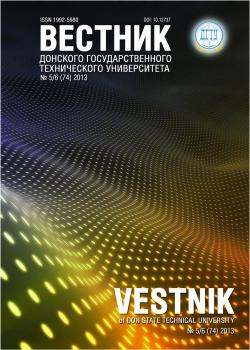The simulation of stock price fluctuations is analyzed. The statistical criteria application allows drawing the conclusion on the investigated models´ validity. Alongside with well-known Kolmogorov-Smirnov and Anderson-Darling criteria, comparatively new Christoffersen and Berkowitz criteria are used to assess interval predictions. Berkowitz criterion is particularly effective when used to assess extreme price leaps within highly volatile periods, since it gives good results also for a small number of observations. It is shown that the customarily used time-series models with normal distribution and with Student distribution are applicable exclusively during relatively stable periods. Under the unstable conditions at the financial markets, models by means of which it is possible to describe a high probability of great price leaps are required. The time-series model with the heavy tailed distribution is studied. The recommendations on the portfolio management under the crisis time are provided on the basis of the performed calculations.
ARMA-GARCH model, Value-at-Risk (VaR), Average Value-at-Risk (AVaR), time series, heavy-tailed distributions.
Введение. В последнее время, в связи с усложнением механизмов, лежащих в основе финансовых рынков и институтов, для того, чтобы принять правильное, взвешенное решение и выработать грамотную стратегию поведения, необходимы математические модели, учитывающие всё большее количество факторов. Наибольший интерес с научной точки зрения представляет изучение изменчивости рыночного процесса. Ключевым параметром, который численно её характеризует, является волатильность. Авторегрессионные гетероскедастичные модели определения вола-тильности (ARCH, GARCH, и др.) позволяют учесть эффект кластеров на рынке, когда торговля достаточно хорошо может быть разделена на периоды низкой и высокой волатильности. В модели авторегрессионной условной гетероскедастичности ARCH [1] каждому дню присваивается свой вес, убывающий по мере удаления от текущей даты. Модель GARCH [2] вовлекает в вычисления значения волатильностей, вычисленные на предыдущих шагах. Поскольку рынок обладает памятью, необходимо эту память учитывать. Для сравнения эффективности в настоящей работе была рассмотрена модель J. P. Morgan (1996) экспоненциально взвешенного скользящего среднего EWMA. Преимущество EWMA-модели заключается в том, что для её реализации необязательно хранить большое количество данных. В любой момент времени достаточно помнить только текущую оценку дисперсии и последнее измеренное значение рыночного показателя. Измерив новое значение рыночного показателя, можно вычислить новое суточное относительное изменение и получить новую оценку дисперсии. При этом вклад доходности каждого периода экспоненциально убывает по мере его удаления в прошлое.
Для того чтобы понять, какую же из существующих моделей выбрать в качестве основы при моделировании биржевых колебаний, необходимо проанализировать свойства соответствую-
1. Engle, R. Autoregressive conditional heteroscedasticity with estimates of Ι/аЯіапсе of united kingdom inflation. Econometrica, 1982, vol. 50, pp. 987-1008.
2. Bollerslev, T Generalized autoregressive conditional heteroskedasticity. Journal of Econometrics, 1986, vol. 31, no. 3, pp. 307-327.
3. Engle, R. F, Patton, A. What good is a volatility model? Quantitative Finance, 2001, vol. 50, pp. 237-245.
4. Belousov, S. M. Modelirovaniye volatilnosti so skachkami: primeneniye k rossiyskomu i ameri-kanskomu fondovym rynkam. [Simulation of volatility with discrete steps: applying to the Russian and American stock markets.] Kvantil, 2006, no. 1, pp. 101-110 (in Russian).
5. Kim, Y. S., et al. Tempered stable and tempered infinitely divisible GARCH models. Journal of Banking and Finance, 2010, no. 34, pp. 2096-2109.
6. Kim, Y. S., et al. The modified tempered stable distribution, GARCH-models and option pricing. Probability and Mathematical Statistics, 2009, vol. 29, no. 1, pp. 91-117.
7. Kim, Y. S., et al. Time series analysis for financial market meltdowns. Journal of Banking and Finance, 2011, no. 35, pp. 1879-1891.
8. Bianchi, M. L, et al. Tempered infinitely divisible distributions and processes. Theory of Probability and Its Applications, Society for Industrial and Applied Mathematics, 2010, vol. 55, no. 1, pp. 58-86.
9. Buldashev, S. V. Statistika dlya treyderov. [Statistics for traders.] Moscow : Kompaniya Sputnik, 2003, 244 p. (in Russian).
10. Christoffersen, P. F. Evaluating interval forecasts. International Economic Review, 1998, vol. 39, no. 4, pp. 841-862.





